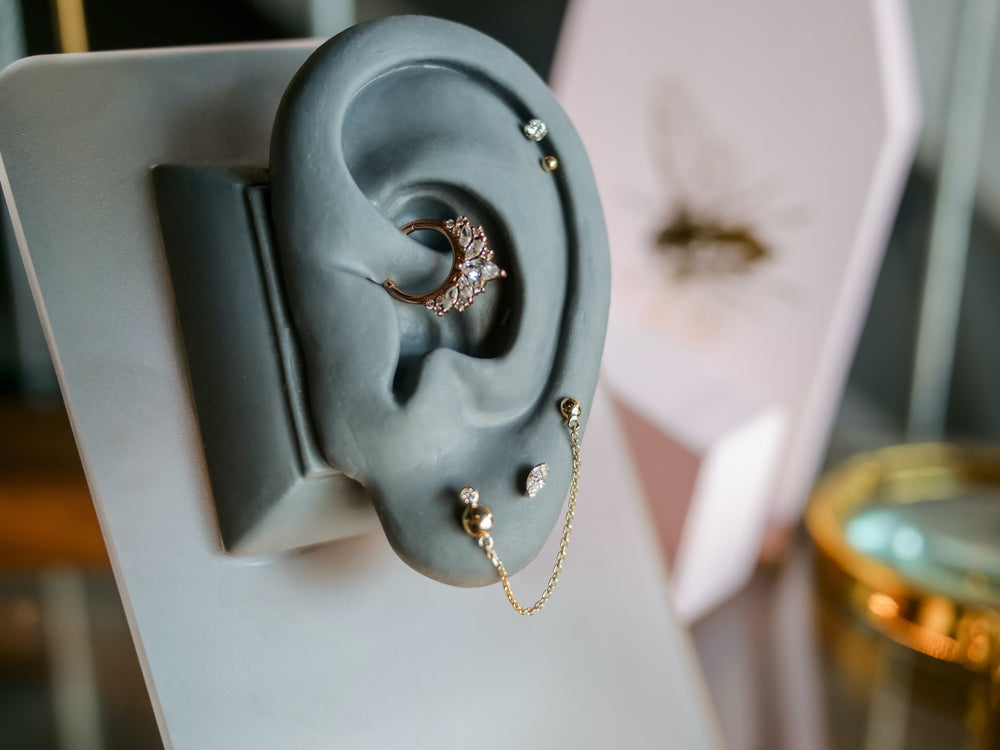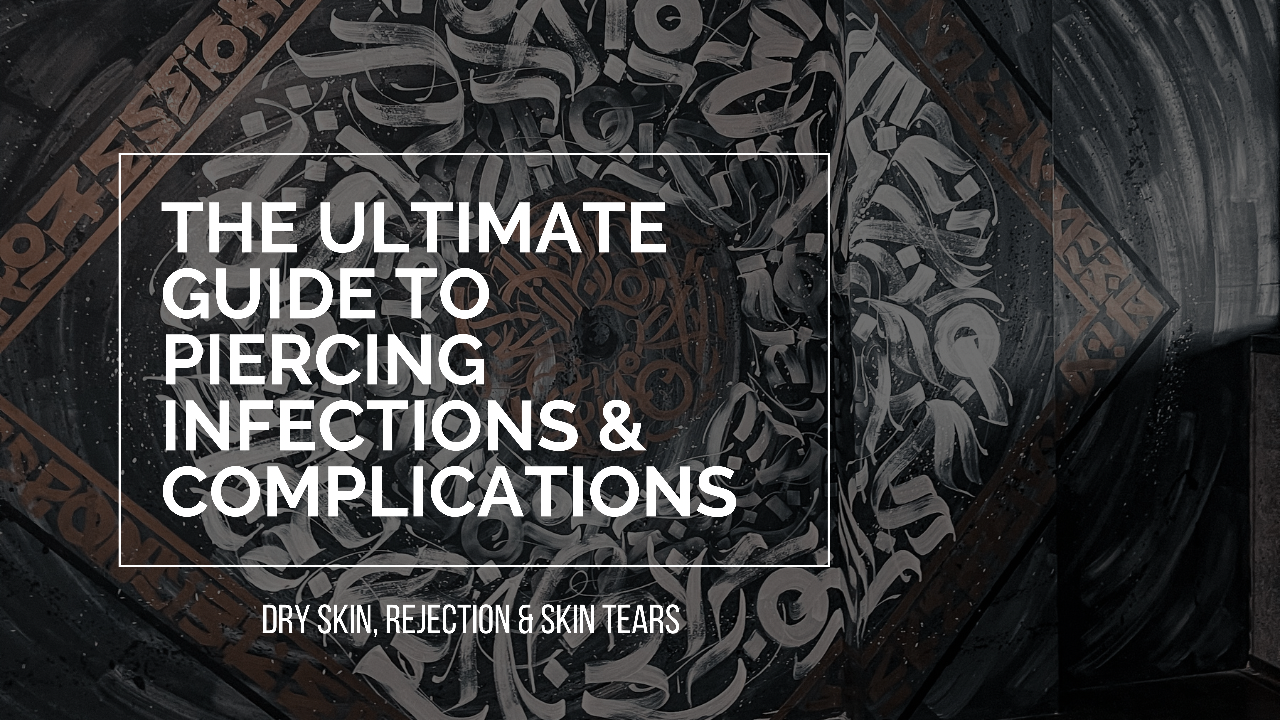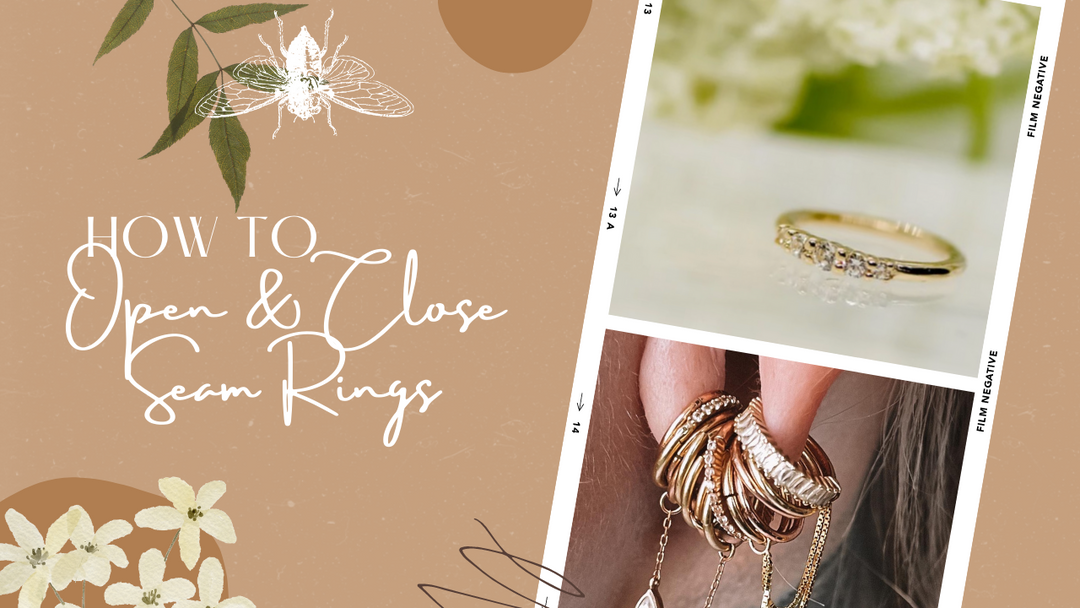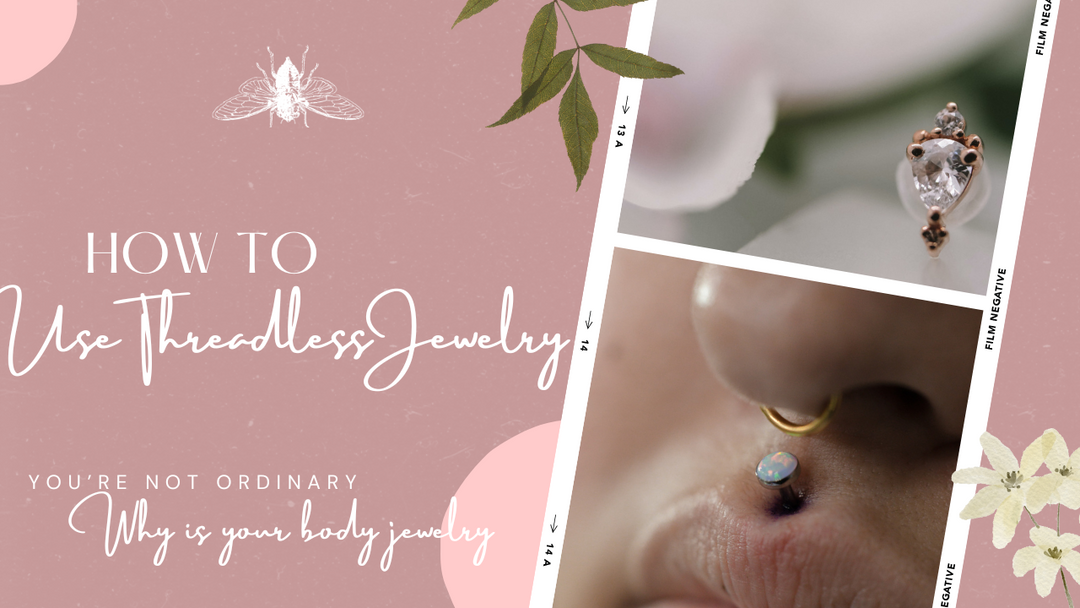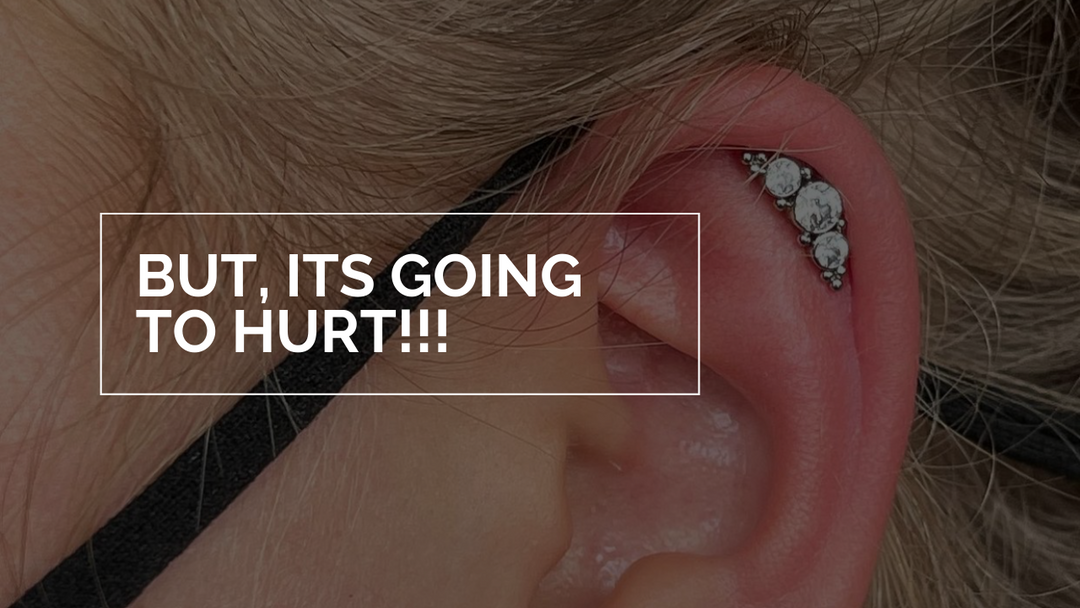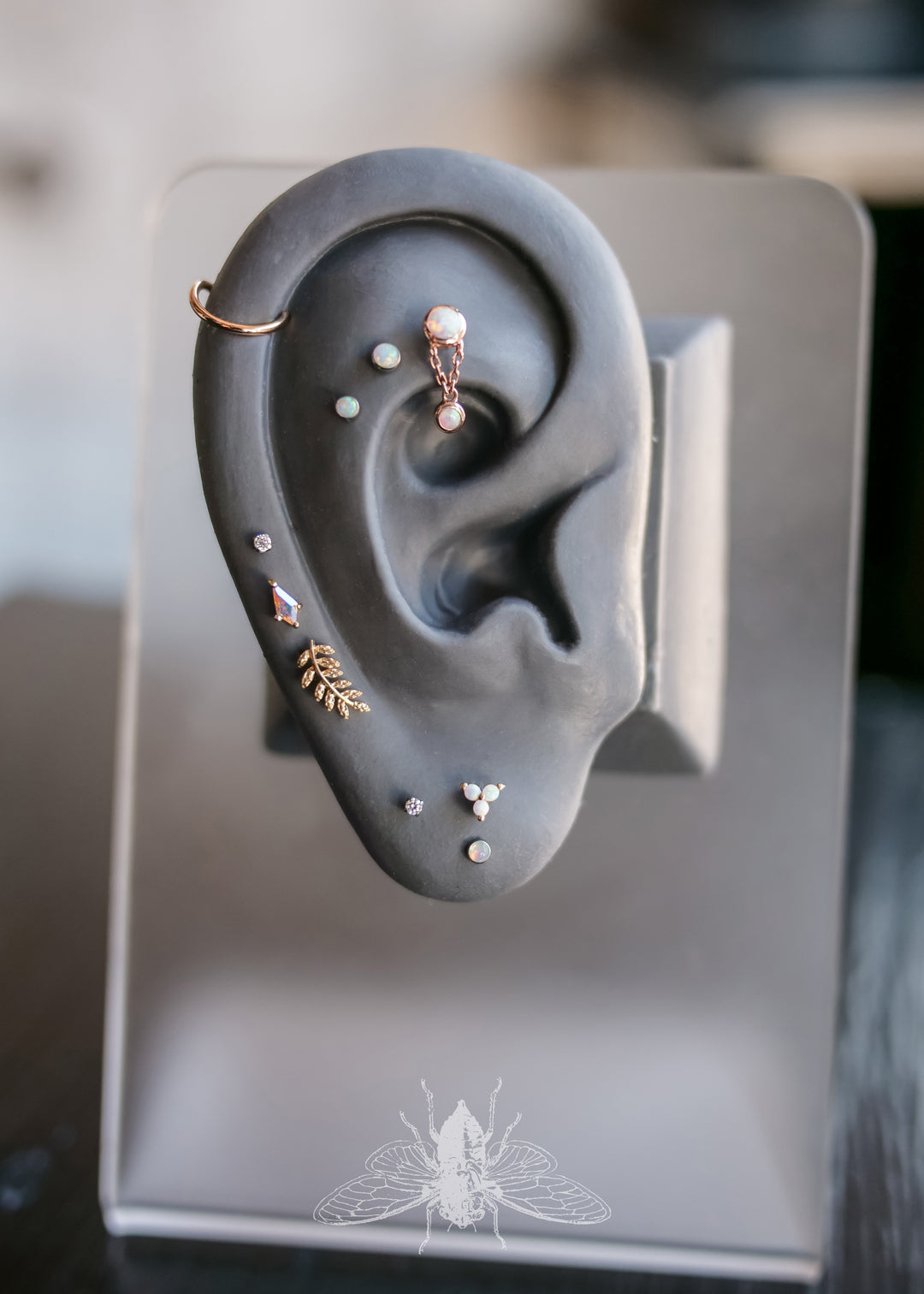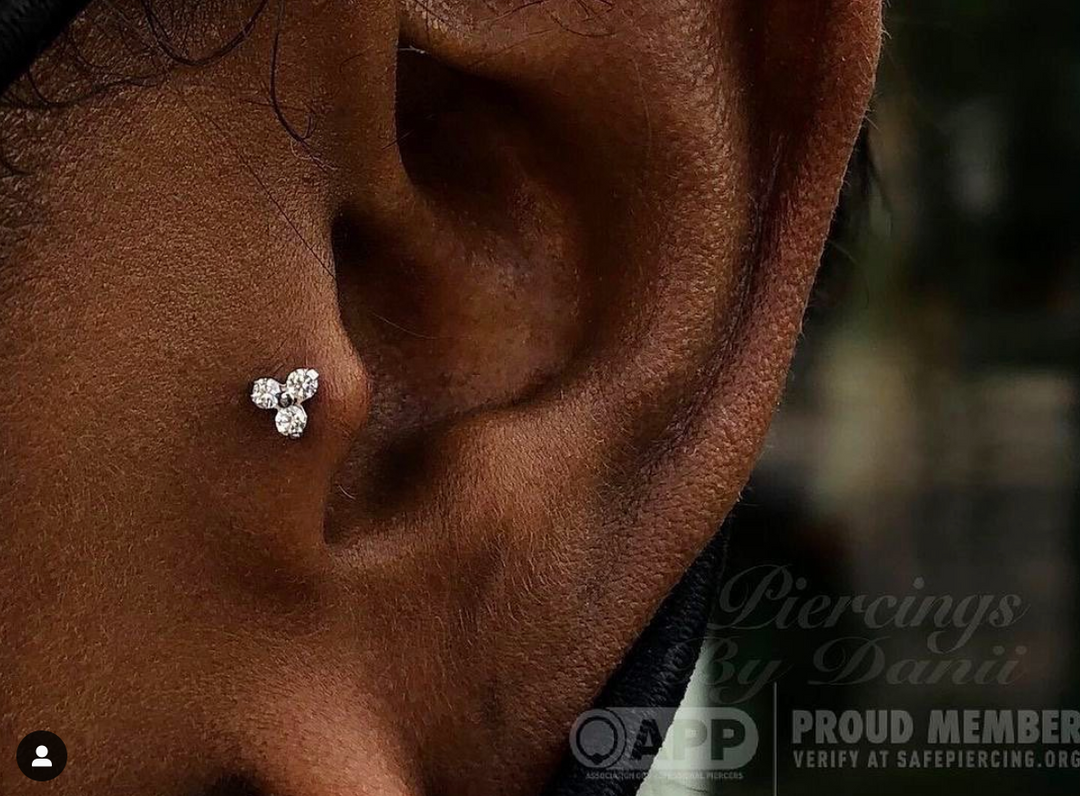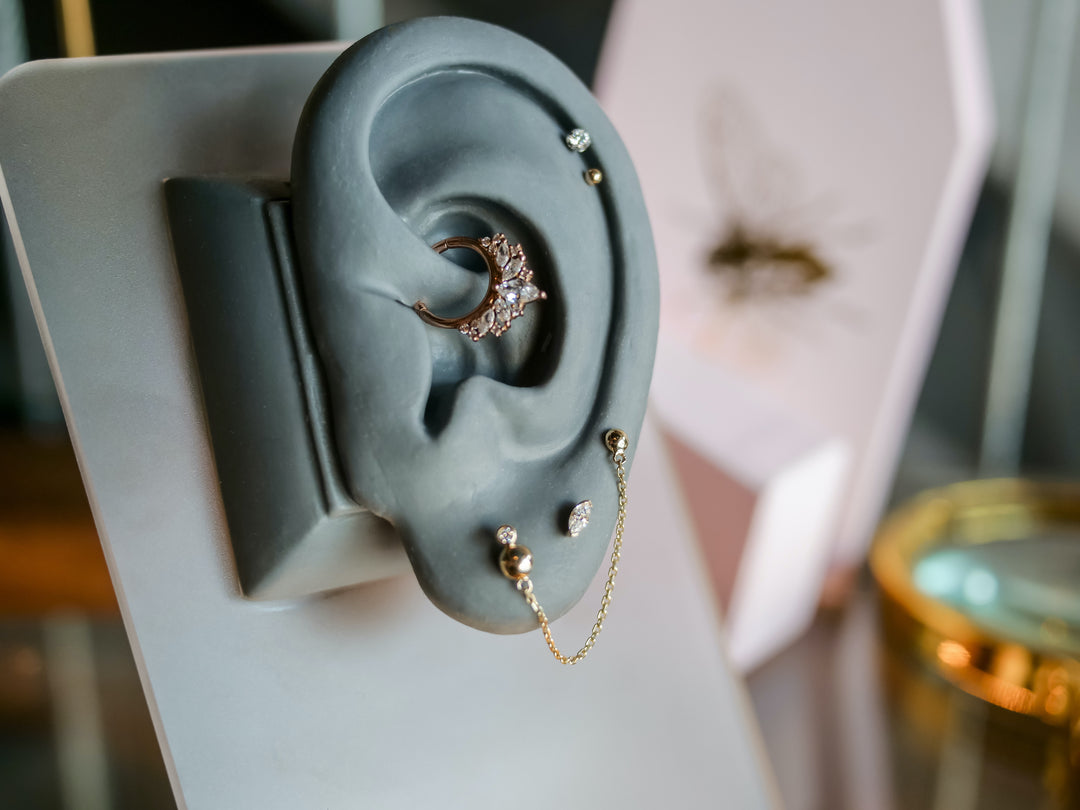Dry Skin is an extremely common reaction after a piercing. We recommend contacting your piercer and letting them know how you are cleaning the piercing and how often. More than likely, you are over cleaning the wound and causing the skin to become dry. Try reducing how often you clean the piercing to once a day or reducing the amount of sea salt in your mixture (1/8 teaspoon to one cup water). Avoid using regular soaps, body washes or shampoos on the piercing, and do not apply lotions or perfumes to the area. You can also try to use a dye and fragrance free laundry detergent.
I Think my Piercing is Rejecting or Migrating!
Rejection or Migration are a common occurrence especially in navel and surface piercings or piercings that are pierced too shallow. Migration is when the jewelry moves slightly in the skin, normally towards the surface of the skin or when the piercing was done when a person was too young and they go through a growth spurt. Rejection is when the jewelry moves more dramatically and is forcing it’s way completely out of your skin.
If you can see more of the bar either as a dark shadow type mark under the skin or at either entry point, you are experiencing a type of migration or rejection. Contact your piercer as soon as possible to determine your best course of action. Do not ever allow the jewelry to come out of the skin completely as the scarring will be more severe and often will require a cosmetic surgery to restore the skin.
Signs that you are experiencing rejection and should remove the jewelry immediately
-
The skin between the openings is flaking and peeling, red and inflamed, or hard and calloused-looking.
• You have less than 1/4 inch of tissue between the openings.
• Just a thin filament of nearly transparent tissue is left, and you can virtually see the jewelry right through your skin.
Migration or Rejection can happen at any time, even if you’ve had the piercing for years and you do not have to have had a traumatic event to have this start. Sometimes you can stop the process by changing the jewelry to a high quality metal or a retaining material like Bioflex or PTFE. Ask your piercer for their recommendation.
If caught early enough and removed before the migration or rejection progresses - re-piercing in the same location is almost always possible however, if migration and rejection has occurred once, you are more likely to have it happen again.
I Tore my Piercing!
Tears are when you hook or snag your piercing on something and pull against the skin abruptly, normally this is minor although extremely painful, sometimes this type of tearing is more extreme or can actually completely rip jewelry free from the skin. If this happens, stop bleeding by applying pressure to the wound with a clean material like a bandage, clean the wound with a disinfectant like dettol, peroxide etc and then bandage or cover the wound. Head to a medical facility as soon as possible to ensure you do not require stitches or medical attention.
If the jewelry is not ripped out you should be able to save the piercing, but will heal with a more severe scar. If the wound has made the piercing larger you will need to secure the jewelry as close to the original position with medical tape, and then clean the piercing as if it was a new piercing. Contact your piercer as soon as possible to get their opinion on the wound. Please note that if the piercing heals, the skin will never be as strong and you are more likely to tear the piercing again.
